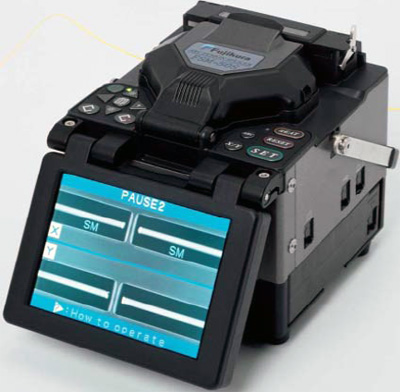
|
|
The Fujikura FSM-50S core aligning arc fusion splicer features include an ergonomic design, reduced numbers of operating steps and a powerful battery extend the boundaries of traditional field fusion splicing performance. The movable monitor and dual-direction operating system essentially gives the operator a choice of two splicers. Specifications. Applicable fibers: SM (ITU-T G.652), MM(ITU-T G.651), DS(ITU -T G.653), NZDS(ITU-T G.655). Fiber Count: Single. Cladding diameter: 80 to 150 um. Coating diameter: 100 to 1000 um. Fiber cleaved length: 8 to 16mm with coating diameter of 250 um or less; 16mm with coating diameter of 250 to 1000 um; Optional set-plate for 8 to 16mm with coating diameter of 250 to 1000??m is available. Actual average splice loss: 0.02dB with SM, 0.01dB with MM, 0.04dB with DS, 0.04dB with NZDS; Measured by cut-back method relevant to ITU-T and IEC standards. Splice time: Typical 9sec. with standard SM fiber. Return loss: >>60dB. Splicing modes: 40 user programmable modes and up to 60 modes for reference(factory predetermined setting). Splice loss estimate: Available. Attenuation splice function: Intentional high splice loss of 0.1dB to 15dB(0.1dB step)can be made for an in-line fixed attenuator. Storage of splice result: The last 2000 results to be stored in the internal memory. Fiber display: X / Y, or both X and Y simultaneously. Magnification: 295x for single X or Y view, or 147x for X and Y view. Viewing method: Two CMOS cameras and 5.6 inch color LCD monitor. Mechanical proof test: 2N (standard) / 4.4N(option). Tube heater: Built - in tube heater with 10 heating modes and up to 20 modes for reference. Tube heat time: Typical 35sec. with FP-03 protection sleeve. Applicable protection sleeve length: 60mm, 40mm and a series of micro sleeves. No.of splice/heating with battery: Typical 80 cycles with BTR-06(S) / Typical 160 cycles with BTR-06(L).
|